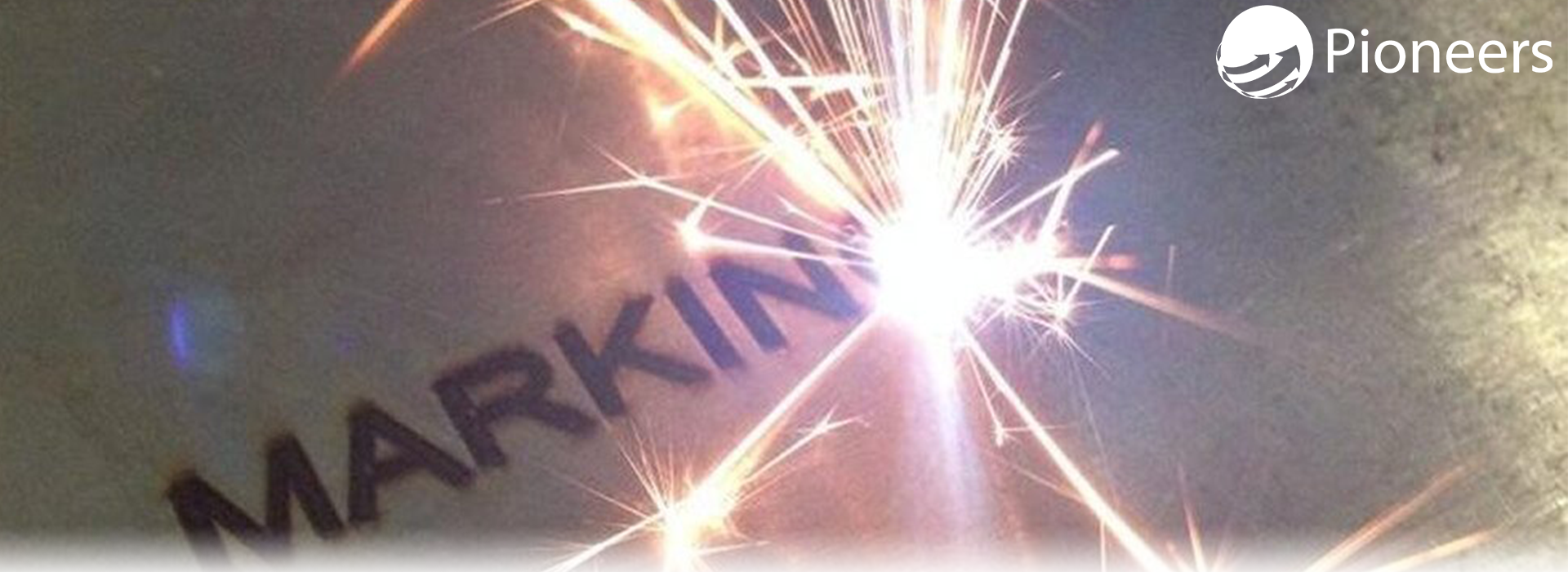What is laser engraving and how does it work?
Laser engraving is a process that vaporizes materials into fumes to engrave permanent, deep marks. The laser beam acts as a chisel, incising marks by removing layers from the surface of the material. The laser hits localized areas with massive levels of energy to generate the high heat required for vaporization.
In this article, you¡¯ll find in-depth information on how laser engraving works and how to find a laser engraving machine.
But first here¡¯s a short video that shows a fiber laser engraving process in action. In this video, you¡¯ll see the high-quality contrasts, the marking speed, and the fumes generated during laser marking.
To choose the right laser marking process, you should rely on three factors:
The marking¡¯s resistance: its capacity to remain legible under harsh conditions
The laser marking speed: the marking time that prevents production bottlenecks
The material being marked: its compatibility with the marking method
Laser engraving technology is typically used to engrave metal workpieces that will be exposed to various types of wear or surface treatments. Metal engraving works with steel and aluminum (including anodized and die-casting aluminum).
The most outstanding feature of this process is its ability to engrave 2D codes that keep high readability rates after post-process treatments. Those treatments can include shotblasting, e-coating and heat treatments, addressing the most complex traceability issues.
But if engraving the most resistant identifiers isn¡¯t needed, laser etching is generally preferred because it¡¯s a high-speed method that doesn¡¯t rely as heavily on ablation.
You can laser etch a wider variety of materials, including steel, aluminum, anodized aluminum, lead, magnesium, and zinc.
There is also a unique method called laser annealing to mark metals like stainless steel.
From Solid to Gas: How It Works
Whereas laser etching melts the material surface to change its roughness, laser engraving sublimates the material surface to create deep crevices. This means that the surface instantly absorbs enough energy to change from solid to gas without ever becoming a liquid.
To achieve sublimation, the laser engraving system must generate enough energy to allow the material is surface to reach its vaporization temperature within milliseconds. Considering the extreme temperatures required for sublimation, laser engravers are pretty powerful tools.
|
Vaporization Temperature of Various Metals |
|
|
Material |
Vaporization Temperature |
|
Aluminum |
2327¡ãC |
|
Copper |
2595¡ãC |
|
Iron |
3000¡ãC |
|
Lead |
1750¡ãC |
|
Magnesium |
1110¡ãC |
|
Zinc |
906¡ãC |
Materials are vaporized into fumes when they reach this temperature. As a result, when you buy a laser system, it should always come equipped with a fume extraction system to protect the work environment and an air knife to protect the laser¡¯s lens.
Fiber lasers are the ideal engraving tools for this because they generate a wavelength that reacts well with metals.
How Do You Engrave High-Contrast, High-Quality Marks?
If you look at the following magnified images, you can see the chaotic surface created as a result of laser engraving.
Before Laser Engraving After Laser Engraving
The bare aluminum before laser engraving, viewed using an electron microscope. The surface is rather smooth. Cells of a data matrix code engraved on an aluminum surface, viewed using an electron microscope. Part of the surface shows absorption caused by chaotic changes in roughness.
Permanent marks created by laser engraving are darker because light is trapped in deep crevices (the engraving depth can reach up to 0.5 mm).
There are two ways of creating contrast when you laser engrave a surface.
Laser engraved alphanumerical values in black only.The first (and faster) engraving method creates contrast between the bare material and the black marks that are engraved. This method is only recommended if the bare material color is pale enough to generate a high contrast.
Laser engraved data matrix code with black and white cells.The second (and longer) engraving method achieves higher quality contrasts because it etches black and white marks. With this method, the laser system uses both laser engraving (to create the black marks) and laser etching (to create the white marks).
Find a Laser Engraving Machine
If you are looking for a laser engraving machine, this list will help you find the right laser:
To integrate custom solutions yourself or with an integrator, view our OEM marking systems, including multiple types of lasers for industrial applications. Our range of laser systems includes fiber lasers and CO2 lasers.
For turnkey automated or semi-automated laser solutions, consult our integrated laser machines page.
To find information specific to the metal you¡¯ll be marking, scroll through the list of metals.
If you need guidance, you can always ask an expert.



